What Are Half-Steps and Whole-Steps?
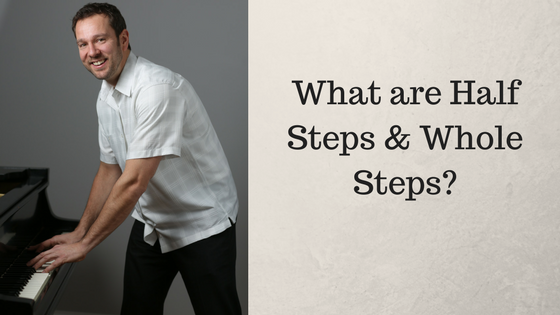
In this article we’re going to answer the question, “What are half-steps and whole-steps?” For starters, half-steps and whole-steps are an important concept in music, and they are especially important building blocks for constructing things like chords and scales. One of the especially nice things about the piano is that it is a very visual instrument with the sequential layout of black and white keys. Being able to see the notes of the piano laid out in this pattern will help us to better understand this half-step and whole-step relationship. You may find it helpful to be near your piano or keyboard as you read through this article.
Half-Steps and Whole-Steps: Starting with Half-Steps
In a nutshell, half-steps represent the smallest possible movement from one note to another note. In other words, when we move by a half-step we are moving from one note to the next closest note, in either an up or down direction. When we say “up,” we mean “up” in terms of pitch – meaning starting from the left side of the piano and moving right. Moving “down” in pitch is obviously moving from right to left.
So if we start on ‘F’ and move up in pitch to the next closest note, we are moving left to right from ‘F’ to ‘F#’ (or ‘Gb’). This movement – from ‘F’ to ‘F#’ – is a half-step up. If we start on ‘F’ and move down in pitch to the next closest note, we are moving right to left from ‘F’ to ‘E.’ This movement – from ‘F’ to ‘E’ – is a half-step down.
Half-Steps and Whole-Steps: … and Now Whole-Steps
Simple math tells us that two halves equal a whole, so two half-steps equal a whole-step. It really is that simple in music. If we move up or down by two whole-steps we are moving in whole-steps. (Using the illustration above), if we move from ‘F’ up a whole-step we arrive at ‘G.’ If we move from ‘F’ down a whole-step we arrive at ‘Eb.’
Half-Steps and Whole-Steps: A Simple Formula
Now you may be saying to yourself, “ok, all this half-step and whole-step talk is great, but how is it going to help me play the piano?” Well, we’re glad you asked. Because by understanding a simple little formula of half- and whole-steps, you can build major and minor scales and chords in all 12 keys.
Let’s take a look at a simple formula that will help you find the first 5 notes of a major scale in any key.
First, choose a starting note (let’s use the illustration above and start on ‘D’ for our example). From the 1st note (D), move up a whole-step to the 2nd note (E). Then move up another whole-step to the 3rd note (F#). From this 3rd note, move up a half-step to the 4th note (G). Then move from the 4th note up a whole-step to the 5th note (A). These are the first 5 notes of a D major scale – D, E, F#, G, A.
Try to memorize this formula and practice using it to build all 12 major scales.


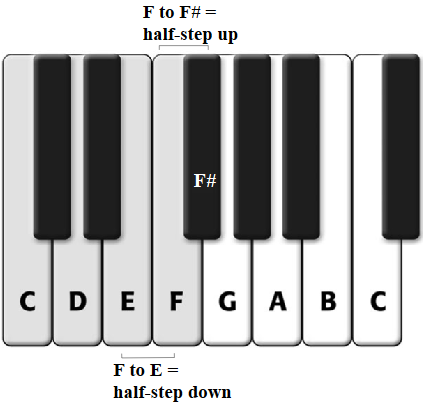

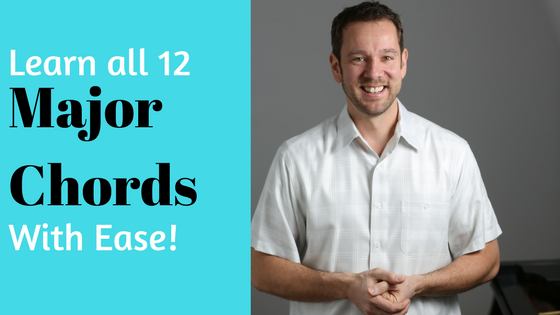
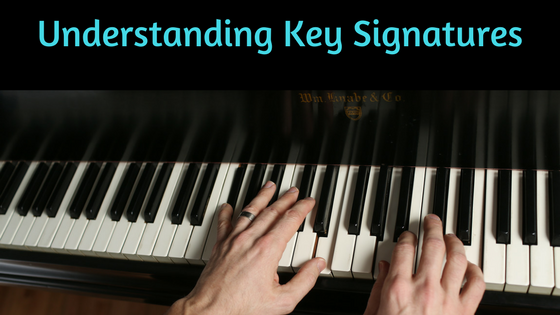
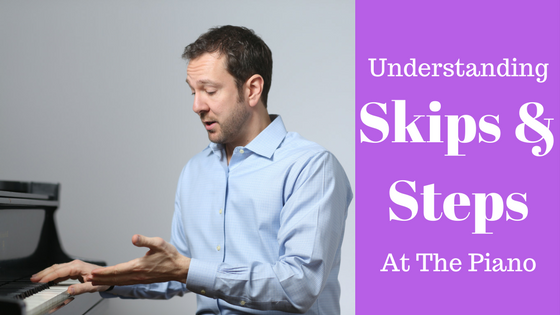
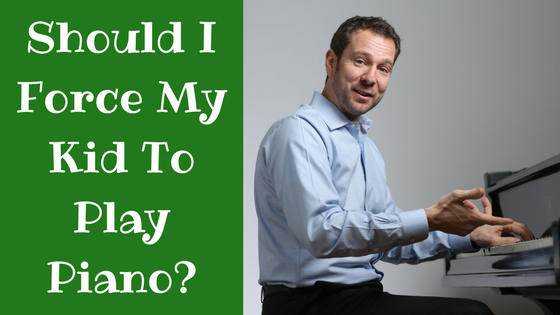
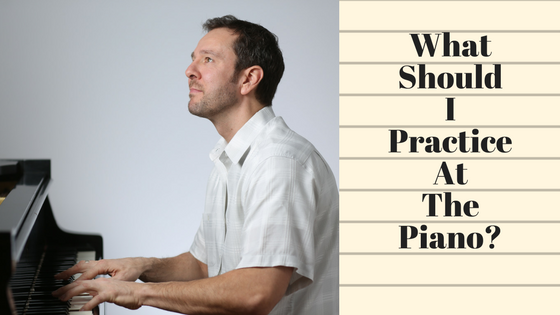
Responses